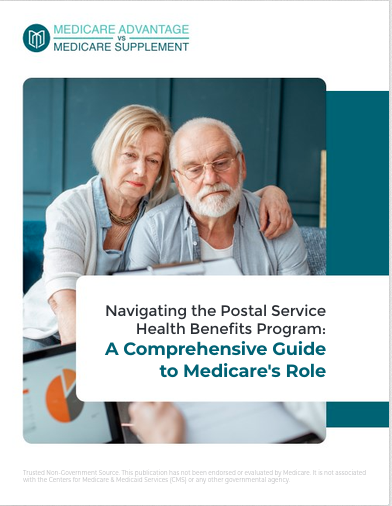Key Takeaways
-
Understanding the foundational elements of Medicare helps you navigate your healthcare options with confidence.
-
Knowing the costs, enrollment periods, and coverage details ensures you make the right decisions for your needs.
Medicare: The Foundation of Your Health Coverage
Medicare is a vital part of healthcare for individuals aged 65 and older, as well as some younger individuals with specific disabilities. It’s a federal program with multiple parts, each serving a unique role in providing comprehensive coverage. Before diving into the various options available, it’s crucial to grasp the basics and how they work together.
Medicare Part A: Hospital Insurance Basics
Medicare Part A primarily covers inpatient hospital care, skilled nursing facility stays, hospice care, and some home healthcare services. For most people, Part A comes without a monthly premium if you or your spouse paid Medicare taxes for at least 10 years. However, there is a deductible for hospital stays, which in 2025 is $1,676 per benefit period.
What Counts as a Benefit Period?
A benefit period begins the day you’re admitted to a hospital and ends when you haven’t received inpatient care for 60 days in a row. This structure can lead to multiple deductibles if you’re hospitalized more than once in a year.
Key Costs Beyond the Deductible
-
Daily Coinsurance: After the deductible, you’ll pay $419 per day for hospital stays lasting 61-90 days.
-
Lifetime Reserve Days: After 90 days, you have 60 lifetime reserve days at $838 per day.
-
Skilled Nursing Facility Care: Covered for up to 100 days per benefit period, but only after a qualifying hospital stay. Coinsurance of $209.50 per day applies from days 21-100.
Medicare Part B: Medical Insurance Essentials
Part B covers outpatient services such as doctor visits, preventive care, lab tests, and some medical equipment. Unlike Part A, Part B always comes with a monthly premium, which in 2025 is $185 for most people. There is also an annual deductible of $257. After meeting the deductible, you typically pay 20% of the Medicare-approved amount for covered services.
What Part B Covers
-
Preventive services like screenings and vaccines
-
Medically necessary services such as diagnostic tests and treatments
-
Durable medical equipment (e.g., wheelchairs)
Income-Based Premium Adjustments
If your income exceeds certain thresholds, you’ll pay a higher premium due to the Income-Related Monthly Adjustment Amount (IRMAA). For 2025, these thresholds begin at $106,000 for individuals and $212,000 for couples filing jointly.
Medicare Part D: Prescription Drug Coverage
Medicare Part D is your go-to for prescription drug coverage. Offered through private insurers but regulated by Medicare, these plans vary in cost and coverage. In 2025, there is a $2,000 cap on out-of-pocket costs for prescription drugs, a significant improvement that eliminates the “donut hole.”
Key Cost Components
-
Deductible: Up to $590 for the year
-
Copayments or Coinsurance: You’ll pay these for medications after meeting the deductible, up to the $2,000 cap
Why Part D Matters
Medications can be expensive, and Part D offers financial protection by reducing the cost burden of prescriptions. Choosing a plan that covers your specific medications is essential for maximizing benefits.
Medicare Advantage (Part C): A Different Approach
Medicare Advantage plans, also known as Part C, combine Parts A, B, and often D into a single plan. These plans are offered by private insurers but must meet Medicare’s coverage standards. While they provide additional benefits like vision and dental care, they also come with network restrictions and potentially higher out-of-pocket costs.
Is Medicare Advantage Right for You?
-
Consider Your Healthcare Needs: If you value extra benefits and can work within a provider network, Part C may suit you.
-
Compare Costs: Look at premiums, copayments, and out-of-pocket limits compared to Original Medicare.
Enrollment Periods: When to Sign Up
Getting the timing right is crucial to avoid penalties and gaps in coverage. Medicare offers specific enrollment periods tailored to different life situations.
Initial Enrollment Period (IEP)
Your IEP is a seven-month window that starts three months before your 65th birthday, includes your birth month, and ends three months after. Enrolling during this period ensures you avoid late enrollment penalties.
General Enrollment Period (GEP)
If you miss your IEP, you can enroll during the GEP, which runs from January 1 to March 31 each year. Coverage begins on July 1, but penalties may apply.
Special Enrollment Periods (SEP)
Certain life events, such as losing employer coverage or moving, may qualify you for an SEP, allowing enrollment outside standard periods without penalties.
Annual Enrollment Period (AEP)
From October 15 to December 7, you can review and change your Medicare Advantage or Part D plan. Any changes take effect on January 1.
Costs to Keep in Mind
While Medicare covers a significant portion of healthcare expenses, it’s not free. Understanding the costs helps you plan your budget effectively.
Premiums
Most people don’t pay a premium for Part A, but Part B premiums are standard unless adjusted by IRMAA. Part D and Medicare Advantage premiums vary by plan.
Deductibles and Coinsurance
These out-of-pocket expenses can add up, especially if you require frequent medical services or hospitalizations.
Out-of-Pocket Caps
Original Medicare doesn’t have an out-of-pocket maximum, but Medicare Advantage plans do, with limits of $9,350 for in-network services and $14,000 for combined services in 2025.
Coordination with Other Coverage
Many beneficiaries coordinate Medicare with other types of coverage, such as employer plans or Medicaid. Understanding how these work together ensures you maximize benefits and minimize costs.
Medicare and Employer Coverage
If you’re still working at 65, your employer coverage may act as primary insurance, with Medicare as secondary. Discuss this with your benefits administrator to avoid gaps.
Medicare and Medicaid
Dual eligibility for Medicare and Medicaid can provide comprehensive coverage, with Medicaid covering costs like premiums and coinsurance that Medicare doesn’t.
Medicare Supplement Insurance (Medigap)
Medigap policies help cover costs that Original Medicare doesn’t, such as deductibles, copayments, and coinsurance. These plans are only available to those enrolled in Original Medicare, not Medicare Advantage.
What Medigap Covers
-
Part A and B deductibles
-
Coinsurance for hospital and skilled nursing stays
-
Foreign travel emergency care
Enrollment Tips
The best time to buy a Medigap policy is during your six-month Medigap Open Enrollment Period, which begins when you turn 65 and enroll in Part B. During this period, insurers cannot deny coverage or charge higher premiums due to health conditions.
Staying Informed and Avoiding Pitfalls
Medicare is a complex system, but staying informed helps you avoid costly mistakes. Here are some tips:
-
Review Your Plan Annually: Healthcare needs change, and so do plans. Use the Annual Enrollment Period to reassess your coverage.
-
Watch for Penalties: Missing enrollment deadlines can lead to lifelong penalties for Parts B and D.
-
Know Your Rights: Medicare has protections in place to ensure fair treatment and access to necessary care.
Taking Charge of Your Medicare Journey
Understanding Medicare’s basics sets you up for success when evaluating all the options available. With this foundation, you’re better equipped to choose the coverage that fits your health needs and financial situation. Remember, the key is to stay proactive, informed, and ready to adapt as your circumstances change.










